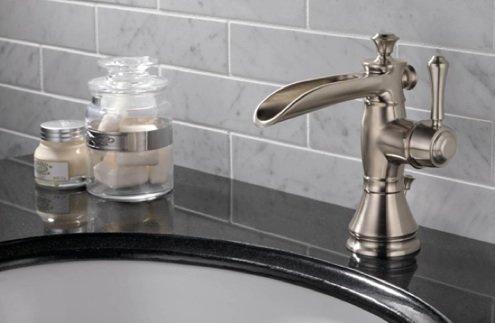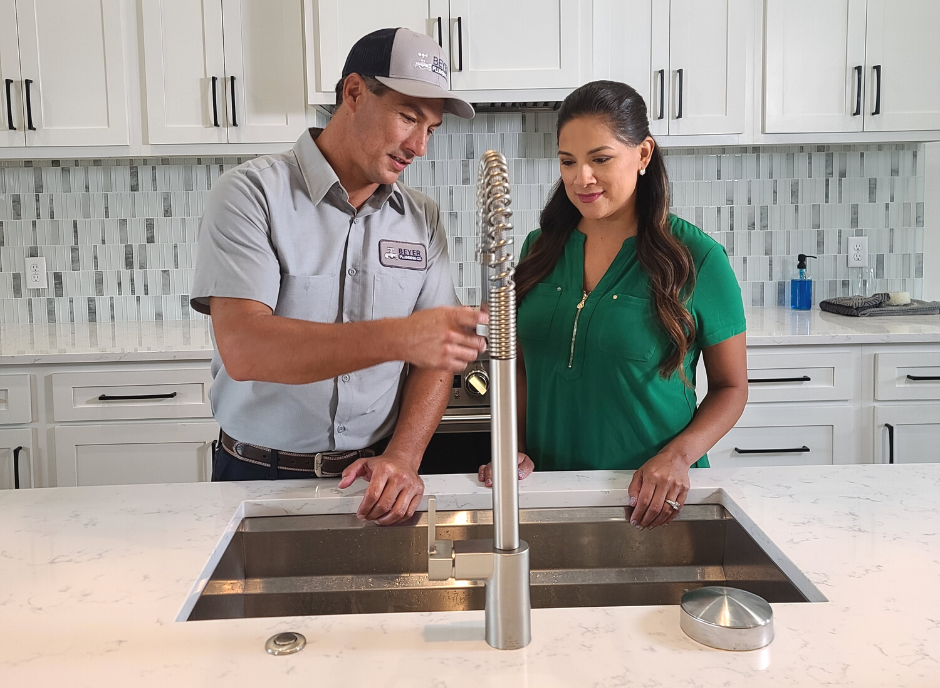Discovering the Significance of Fixing a Leaking Faucet
Discovering the Significance of Fixing a Leaking Faucet
Blog Article
Nearly everybody has got their own rationale when it comes to Why It's Important to Fix Leaky Faucets.

Trickling taps may seem like a minor aggravation, however their impact surpasses just the inconvenience of the sound. From wasting water to sustaining unneeded financial costs and wellness dangers, overlooking a leaking tap can bring about numerous consequences. In this short article, we'll explore why it's critical to resolve this usual household problem immediately and properly.
Wastefulness of Water
Ecological Effect
Leaking taps contribute considerably to water wastefulness. According to the Epa (EPA), a solitary tap leaking at one drip per second can waste greater than 3,000 gallons of water each year. This not just stress water sources yet also impacts environments and wildlife dependent on them.
Step-by-Step Guide to Fixing a Dripping Tap
Tools Called for
Before attempting to take care of a dripping tap, collect the necessary devices, including a flexible wrench, screwdrivers, substitute parts (such as washing machines or cartridges), and plumber's tape.
Usual Tap Issues and Their Solutions
Recognize the sort of tap and the particular concern causing the drip. Usual troubles consist of worn-out washing machines, rusty valve seats, or damaged O-rings. Describe maker instructions or on the internet tutorials for step-by-step assistance on repair services.
Financial Prices
Increased Water Expenses
Past the ecological effect, trickling taps can blow up water bills considerably. The built up waste gradually translates right into higher energy expenditures, which could have been avoided with timely fixings.
Potential Building Damages
Furthermore, long term leaking can bring about damage to components and surfaces surrounding the tap. Water accumulation can trigger discoloration, corrosion, and even architectural concerns if left unattended, resulting in additional repair service prices.
Health Concerns
Mold and Mildew Development
The continuous visibility of dampness from a trickling tap creates a suitable setting for mold and mildew and mildew growth. These fungis not only compromise indoor air high quality however also pose health threats, especially for individuals with respiratory problems or allergies.
Waterborne Diseases
Stationary water in dripping taps can become a breeding place for bacteria and other pathogens, boosting the risk of waterborne diseases. Impurities such as Legionella microorganisms thrive in stagnant water, potentially causing significant diseases when ingested or breathed in.
Do it yourself vs. Specialist Repair
Advantages and disadvantages of Do It Yourself Repair Work
While some may attempt to repair a leaking tap themselves, do it yourself fixings come with their own set of difficulties. Without appropriate understanding and tools, DIY efforts can worsen the concern or bring about insufficient fixings, prolonging the problem.
Benefits of Hiring a Professional Plumber
Employing an expert plumber makes sure that the underlying cause of the leaking faucet is resolved effectively. Plumbing professionals have the experience and equipment to diagnose and fix tap problems successfully, saving time and lessening the danger of more damage.
Environmental Obligation
Specific Payment to Preservation
Taking duty for taking care of trickling faucets lines up with broader efforts towards water preservation and environmental sustainability. Every individual's activities jointly make a substantial impact on protecting precious sources.
Sustainable Living Practices
By prioritizing timely repair services and adopting water-saving practices, individuals add to sustainable living methods that profit both existing and future generations.
Preventive Measures
Routine Maintenance Tips
To prevent trickling taps, perform regular upkeep such as cleansing aerators, evaluating for leakages, and replacing damaged parts immediately. In addition, consider installing water-saving devices or upgrading to a lot more effective fixtures.
Significance of Prompt Repair Works
Resolving trickling faucets as quickly as they're noticed avoids further water waste and prospective damages, ultimately conserving both water and money in the future.
Influence On Residential Property Value
Assumption of Well-Maintained Residential Property
Maintaining a residential or commercial property in good condition, consisting of dealing with maintenance problems like leaking taps, enhances its perceived worth and value amongst possible buyers or tenants.
Impact on Resale Worth
Properties with properly maintained plumbing fixtures, including taps, command higher resale values in the real estate market. Resolving dripping faucets can add to a positive impression during building evaluations and settlements.
Conclusion
Addressing a dripping tap exceeds simple ease; it's a crucial step towards conserving water, lowering monetary prices, and guarding health and wellness and property. Whether with DIY repairs or professional support, doing something about it to take care of dripping faucets is a little yet impactful way to advertise liable stewardship of sources and add to a healthier, extra lasting future.
How to Fix a Dripping or Leaky Faucet
A leaking faucet is one of the most common problems that homeowners encounter, but it being commonplace doesn’t make it any less annoying. The constant drip drip drip of a leaking bathtub faucet, showerhead, or sink tap can disturb your home’s serenity. Left neglected, a dripping faucet can also result in higher water bills and discoloration or mold growth in your sink or plumbing fixtures.
Fortunately, you don’t have to be a trained plumber to know how to stop a dripping faucet. With some basic tools, replacement parts, and a little patience, leaky faucet repair is a breeze. In this article, we’ll explain what causes dripping faucets and how you can fix them.
What Causes a Leaking Faucet?
Kitchen and bathroom faucets come in all manner of designs, but most involve some combination of valves, O-rings, seals, and washers. The O-ring is usually the weakest link, but any one of these pieces can wear down over time. Heat, moisture, temperature fluctuations, minerals, mold, and movement can contribute to warping and corrosion, breaking the watertight seal. This just comes with the territory of being a homeowner. Everything is always subject to wear and tear, and some component parts of your appliances and fixtures need to be replaced on occasion. At least replacement O-rings are cheap!
More rarely, dripping faucets can be a symptom of excessively high water pressure. Were this the case in your home, you would probably notice that the leak is not isolated to one faucet. Water pressure issues are harder to resolve on your own. We recommend contacting a professional plumber if you suspect your water pressure is too high.
How to Fix a Dripping Faucet
Pipe wrench or monkey wrench Allen wrench set Screwdrivers Old towel or rag Shut off the water.
Before you do anything, you need to turn off the water to keep from drenching your kitchen or bathroom. You should find a valve under the sink and against the wall. Once you’ve turned this valve, try turning the faucet on to confirm that the water source has been cut off.
If you can’t locate your local valve for the faucet you’re working on, you can always shut off the water to the house at the main valve. Of course, this will prohibit anyone from using the sinks, showers, or toilets while you’re working on the faucet that’s giving you trouble.
Plug or block the drain.
You’ll be disassembling the faucet and removing some small bits of hardware. Plug the drain with a stopper or rag to avoid the possibility of a small screw falling into your P-trap.
Take apart the faucet assembly.
There are several varieties of kitchen and bathroom faucets, each with its own manner of assembly. For detailed instructions on how to disassemble your faucet, you can refer to the fixture’s manual or contact the manufacturer. If you know whether you have a ball, disc, cartridge, or compression faucet, you can find detailed schematics online.
In general, you need to begin by removing the faucet handles. You might notice a small screw that you’ll need to remove with a screwdriver or Allen wrench. If you don’t see any visible securing hardware, it’s likely hidden under a decorative cap that can be unscrewed or popped off with flathead screwdriver.
Remove each piece methodically, consulting a schematic when necessary. Take notes or arrange the pieces in such a way to make it easier to correctly reassemble the faucet later.
Remove the cartridge.
Once you’ve removed the handles and securing hardware, you should be able to remove the valve cartridge or stem. Some cartridges will slide right out. Other faucet models will require you to loosen a nut with a pipe wrench before you can remove the valve stem.
Examine the exposed hardware.
With the cartridge or stem removed, inspect the component parts. Check the rubber O-rings for wear and tear. Also examine the seat washer for corrosion or other damage. These pieces are usually the responsible parties for a dripping faucet, but it’s worth inspecting the other component parts while you have the faucet disassembled.
Find replacement parts.
Once you’ve identified which faucet component has failed, find an identical replacement. Your local hardware store should have O-rings, seat washers, and other standard components in stock. If you have a luxury or uncommon faucet, you may have to contact the manufacturer for a replacement part.
It’s a good idea to take your old parts with you to the hardware store so you can compare them with the store’s inventory and be sure you’re purchasing the correct replacement.
Reassemble the faucet.
With your new parts in hand, reconstruct the faucet and handles. Don’t be tempted to overtighten screws or nuts. You might think this could create a better seal, but it can instead damage or bend a delicate part of the assembly and create a new problem for you.
Turn on the water and test the faucet.
The only thing left to do is test your work. Unplug the sink, turn the water back on, and try the faucet. Congratulate yourself on a job well done!
https://www.libertyhomeguard.com/how-to-fix-a-dripping-or-leaky-faucet/

We hope you liked our topic about What Causes Leaky Faucets & How To Fix Them. Many thanks for finding the time to read our piece. So long as you enjoyed our article please don't forget to pass it around. We treasure reading our article about Leaky Faucets: Why They Happen & What to Do About Them.
Report this page